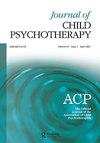精神分析框架与同意情境:儿童患者在出版困境中的定位
IF 0.8
Q4 PSYCHOLOGY, CLINICAL
引用次数: 0
摘要
摘要作者探讨了目前儿童患者临床资料出版的同意标准的困境,以及在寻求出版许可时对儿童的心理影响。有人提出,精神分析观点为“不伤害”这一更普遍的伦理创造了一个额外的维度,要求临床医生将患者的无意识体验视为问题的核心。引入“同意情况”一词是为了描述这样一种方式,即提供临床医生关于患者治疗经历的书面草稿,然后请求患者及其家人允许发表,使他们暴露在俄狄浦尔性质的外部现实中,损害治疗的框架,以及在治疗中包含功能的生命周期。框架可能从一开始就以泄漏容器的形式受到损害,在处理过程中作为框架的背叛,或者在处理结束后作为对容纳对象的入侵。作者通过对专业发展和出版系统进行创造性的修改,展示了这对所有年轻患者来说是一种负担,可以由专业社区集体承担。本文章由计算机程序翻译,如有差异,请以英文原文为准。
The psychoanalytic frame and the consent situation: the child patient’s position in the publication dilemma
ABSTRACT The author explores the current dilemma regarding consent standards for the publication of child patient clinical material, and the psychic impact on the child when seeking permission to publish. It is proposed that a psychoanalytic view creates an additional dimension to the more universal ethic of ‘do no harm’, requiring clinicians to consider the unconscious experience of the patient as the core of the matter. The term consent situation is introduced to describe the way in which providing a draft of the clinician’s writing about the patient’s experience in treatment, and then asking the patient and family for permission to publish it, subjects them to external realities of an oedipal nature, compromising the frame around the treatment, and the vital cycle of the containing function in the treatment. The frame could potentially be compromised from the beginning in the form of a leaky container, during the treatment as a betrayal of the frame, or after the treatment has ended as an intrusion into the containing object. The author shows how this is a burden to all young patients that could be collectively carried by the professional community, by using creative modifications to systems of professional development and publishing.
求助全文
通过发布文献求助,成功后即可免费获取论文全文。
去求助
来源期刊

JOURNAL OF CHILD PSYCHOTHERAPY
PSYCHOLOGY, CLINICAL-
CiteScore
0.70
自引率
50.00%
发文量
46
期刊介绍:
The Journal of Child Psychotherapy is the official journal of the Association of Child Psychotherapists, first published in 1963. It is an essential publication for all those with an interest in the theory and practice of psychoanalytic psychotherapy and work with infants, children, adolescents and their parents where there are emotional and psychological problems. The journal also deals with the applications of such theory and practice in other settings or fields The Journal is concerned with a wide spectrum of emotional and behavioural disorders. These range from the more severe conditions of autism, anorexia, depression and the traumas of emotional, physical and sexual abuse to problems such as bed wetting and soiling, eating difficulties and sleep disturbance.
 求助内容:
求助内容: 应助结果提醒方式:
应助结果提醒方式:


